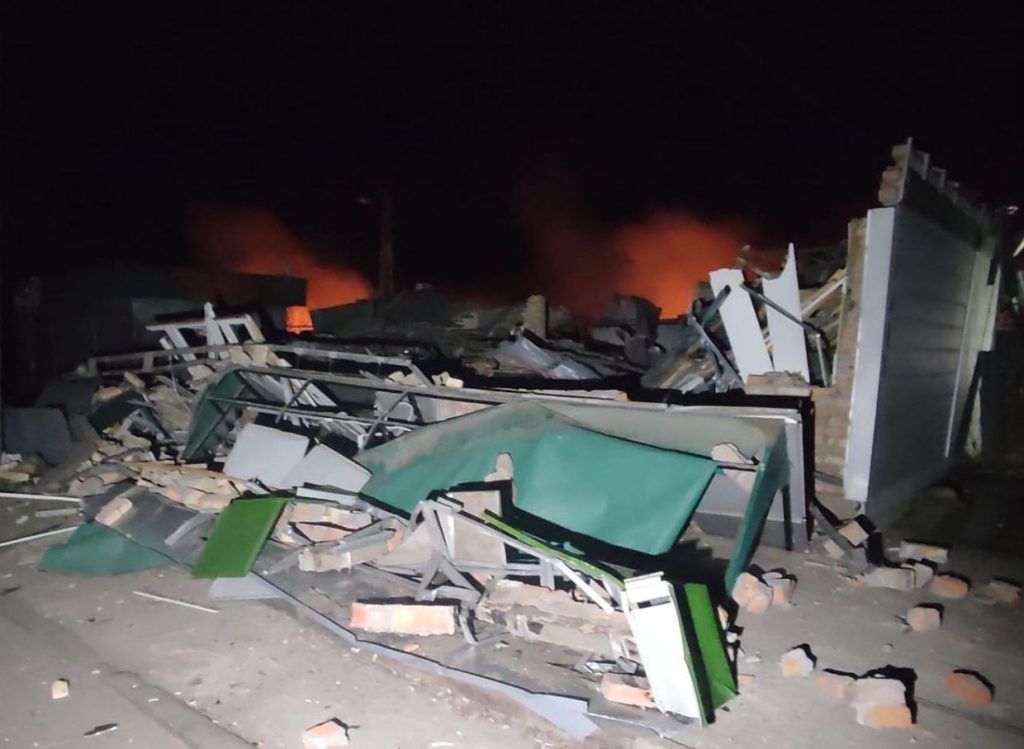Russia launched another large-scale attack against Ukrainian cities on March 29, targeting nearly every region of Ukraine. The attacks included explosions in Dnipro and damage to critical infrastructure in Kamianske in Dnipropetrovsk Oblast. Energy facilities were damaged, and a housing cooperative was destroyed, injuring several people, including a 5-year-old girl. DTEK, Ukraine’s largest private energy company, reported that three of its power plants were struck and seriously damaged in the attacks. Russian forces used drones, bombers, and missiles in the assault, with at least 10 drones shot down over Dnipropetrovsk Oblast and four missiles over Dnipro.
The attacks on Ukraine’s critical infrastructure by Russia have intensified in a renewed assault on the country’s energy grid. Recent mass attacks have targeted the Dnipro Hydroelectric Power Plant, the largest hydroelectric station in Ukraine. Poland announced that it had scrambled military jets to defend its airspace during the attacks. Reductions in Ukraine’s air defense capacity have limited the military’s ability to shoot down Russian missiles and drones during the assaults. The goal of these attacks is to knock out Ukraine’s power grid and cause widespread damage.
From March 21-25, Russia launched a fresh wave of missile and drone attacks against Ukraine, hitting the country’s critical infrastructure harder than ever before. The attacks included 190 missiles, 140 Shahed-type drones, and 700 aerial bombs pounding the country. President Volodymyr Zelensky has condemned these attacks, highlighting the destructive impact on Ukraine’s infrastructure and civilian population. The attacks have left thousands of people without heating and caused significant damage to vital infrastructure across multiple regions.
The attacks on Ukraine by Russia have been relentless, with multiple waves of missiles, drones, and bombs targeting cities and critical infrastructure. The use of Russian military assets like bombers and ballistic missiles has caused widespread destruction and casualties in Ukraine. The assaults have further strained Ukraine’s air defense capabilities, making it challenging to defend against the volume and intensity of the attacks. The ongoing conflict between Russia and Ukraine shows no signs of easing, with Russia continuing its aggressive tactics to destabilize and weaken Ukraine.
The international community has expressed concern over the escalation of violence in Ukraine, with countries like Poland taking measures to defend their airspace during the attacks. The United States and other Western allies have condemned Russia’s actions and called for an end to the hostilities. The assaults on Ukraine’s critical infrastructure have raised alarms about the humanitarian impact on civilians and the potential for further escalation. Efforts to support independent journalism in Ukraine are crucial to ensure accurate reporting and raise awareness about the situation on the ground.
As the conflict in Ukraine continues, the need for support for the Ukrainian people and efforts to protect critical infrastructure remains paramount. Russia’s ongoing aggression poses a significant threat to regional stability and the security of Ukraine. The international community must stand in solidarity with Ukraine and support efforts to de-escalate the conflict and protect the country’s sovereignty. By highlighting the devastating impact of the attacks on Ukraine’s infrastructure and civilians, awareness can be raised about the urgent need for a peaceful resolution to the crisis. Supporting independent journalism in Ukraine is one way to stay informed and contribute to the fight against disinformation and propaganda in the midst of the ongoing conflict.


